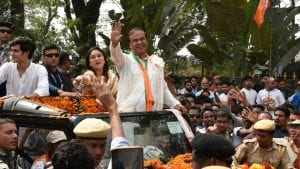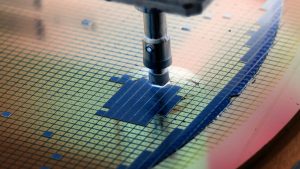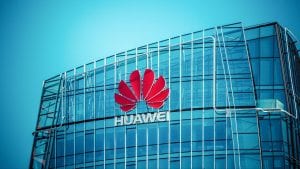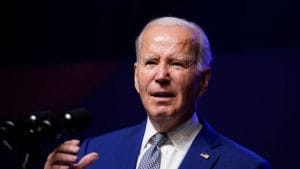SoftBank sells off Vision Fund assets as Masayoshi Son pivots to AI, chips

KV Prasad Jun 13, 2022, 06:35 AM IST (Published)
 Listen to the Article (6 Minutes)
Listen to the Article (6 Minutes)
Summary
One possible Son project on the horizon: bankrolling a $100 billion chip venture to compete with Nvidia Corp. and supply semiconductors to power the development of AI services.
SoftBank Group Corp.’s flagship Vision Fund has quietly sold off or written down billions of dollars’ worth of its publicly-listed holdings in recent years, a sign of founder Masayoshi Son’s shift away from the venture capital deals that were once an obsession and toward strategic investments in semiconductors and artificial intelligence.
Since the end of 2021, the world’s biggest startup fund has seen its US-listed portfolio shrink by almost $29 billion, as it sold down stakes in companies such as Coupang Inc., DoorDash Inc. and Grab Holdings Ltd. and share prices fell, regulatory filings show. That figure doesn’t include the sale of the Vision Fund’s stake in chip designer Arm Holdings Plc back to SoftBank last year. The one-time tech kingmaker is now a shadow of its former self, having laid off more than a hundred staff and slowed new investments to a fraction of its past pace.
Son is selling off assets from the fund’s portfolio as he prepares for possible forays into AI and related hardware, said people familiar with the billionaire’s thinking. SoftBank’s equity capital market team — a group of traders from the likes of Goldman Sachs — has played a central role in monetising the Vision Fund’s sizable stakes with minimal market disruption, said the people, who asked not to be identified discussing matters that are private.
Many of the investments led by the SoftBank chairman now bypass the Vision Fund and are orchestrated by the holding company. While Son long teased the possibility of a series of Vision Funds launched every two to three years, the prospect of a third Vision Fund — let alone a fourth — no longer comes up, said the people.
Instead, the fund’s reduced staff are mostly caretakers. The equity capital market team is instrumental in detecting the most opportune moments for assets sales, at times through block trades on secondary markets, the people said. They are concentrating on locking in investment gains and reversing any losses.
Son has moved on to new obsessions, inspired in part by the success of Arm. The chip designer’s market value has soared to around $106 billion since its market debut last year, making SoftBank’s 90% holding worth more than all of SoftBank.
One possible Son project on the horizon: bankrolling a $100 billion chip venture to compete with Nvidia Corp. and supply semiconductors to power the development of AI services. The 66-year-old’s plans remain in flux, the people said.
The SoftBank asset sale disclosures come from 13F filings to the US Securities and Exchange Commission, and represent only the fund’s US-listed companies. That comprises about half of its publicly-listed portfolio firms by fair value. The Vision Fund also has been gradually selling down stakes in Indian startup Paytm and China’s SenseTime Group Inc., with SoftBank now owning less than 5% of either firm.
In terms of SoftBank’s overall net asset value, which subtracts liabilities, the Vision Fund contributed 7.3 trillion yen ($47 billion) at the end of December compared with about 9.5 trillion yen at the end of 2021. Arm’s contribution by the same measure came to 6.1 trillion yen at end-December.
A SoftBank representative declined to comment.
Strategy Shift
Seven years from the Vision Fund’s launch ceremony in Riyadh, the Tokyo-based investor has little to show from a push that directed billions of dollars’ worth of Saudi and Abu Dhabi sovereign funds into young tech firms. The experiment helped fuel a global surge in valuations that burst when Son’s exuberance met reality.
A series of high-profile implosions ensued, including those of WeWork Inc., Katerra Inc. and Zume Pizza Inc., damaging Son’s reputation and increasing his personal debts to the company.
SoftBank’s shift in strategy also reflects a reset in the broader venture capital market. The two Vision Funds and the Latin America funds together managed committed capital of more than $160 billion, by far the largest pot of startup capital ever collected. Staff initially went on the hunt for promising companies requiring investments of a minimum $100 million — more money than many young companies wanted or could spend effectively.
“SoftBank got fairly overextended into some early-stage companies where maybe they thought capital could be the real differentiator in the market,” Matt Murphy, a partner a Menlo Ventures. “That often didn’t work out well. Sometimes it did.”
The startup field has grown more conservative in recent years. VCs and companies have recognised the dangers of too much money.
“I don’t think there’s as much demand for that amount of capital in the market right now,” he said.
Accelerating Sales
Asset sales by the Vision Fund have been accelerating, according to SEC filings. Since the end of 2021, SoftBank divested sizable stakes in Coupang, but more than a quarter of the transaction volume has taken place this year. It’s also continued to sell down its stakes in Grab and DoorDash, and has fully exited from Uber Technologies Inc. and India’s Zomato Ltd.
At the same time, the Vision Fund sold back to SoftBank the 25% stake in Arm it obtained in lieu of $8.2 billion of SoftBank’s capital commitment. Cambridge, UK-based Arm, whose power-saving chip designs are used in virtually all mobile devices worldwide, went public in September.
In recent months, SoftBank is directly investing in companies it sees as strategically important, in some cases, taking controlling stakes. The Japanese investment firm is in talks to acquire British semiconductor startup Graphcore Ltd., Bloomberg reported. Earlier this week, SoftBank led a $1.05 billion funding round for UK self-driving startup Wayve Technologies Ltd., investing along with Nvidia and existing backer Microsoft Corp. In 2022, a SoftBank blank-check firm merged with robotics warehouse automation firm Symbotic Inc., and the two firms have since partnered on projects.
Past deals have included acquisitions of US carrier Sprint, as well as Vodafone Group Plc’s Japan operations and Yahoo Inc.’s stake in then-Yahoo Japan. The Sprint acquisition led to a boost in SoftBank’s stake in T-Mobile last year, the result of an agreement struck when T-Mobile bought Sprint in 2020.
“The Vision Fund has been a prolific seller”
For all but one of the past seven quarters, the total value of disposals at the Vision Fund has outweighed that of investments, the company’s earnings reports show. In the December quarter, the Vision Fund divested $2.2 billion of its assets while spending $90 million on investments.
That’s helped lift SoftBank’s cash pile to 6.2 trillion yen, up from 4.6 trillion yen at the end of 2021. The second Vision Fund still has around $6 billion to spend, but in practice, the money is Son’s to direct as he pleases, since the second Vision Fund has no external partners, the people familiar with the fund’s management said.
Kirk Boodry, an analyst at Astris Advisory, estimates the two Vision Funds sold at least $6 billion worth of their holdings in the fiscal year ended March. The first Vision Fund has sold at least $5 billion since Sept. 24, he said.
“The Vision Fund has been a prolific seller since September,” he said. “A growing cash pile could point to a deeper pivot to generative AI.”
The SEC filings also do not reflect sales or bankruptcies of unlisted companies in which SoftBank has invested. The Vision Funds together have invested in hundreds of startups, the majority of which remain privately held. The fund’s withdrawal from big new startup investments and generous follow-ons is contributing to a drought in global venture capital.
Some of the Vision Fund portfolio companies that have gone under this year include window-maker View Inc. and genetic-testing company Invitae Corp.
“No doubt, Vision Fund had an impact on startup valuations in 2020-2021,” Boodry said. “Those days are not coming back.”

Elon Musk forms several ‘X Holdings’ companies to fund potential Twitter buyout
3 Mins Read
Thursday’s filing dispelled some doubts, though Musk still has work to do. He and his advisers will spend the coming days vetting potential investors for the equity portion of his offer, according to people familiar with the matter

KV Prasad Journo follow politics, process in Parliament and US Congress. Former Congressional APSA-Fulbright Fellow



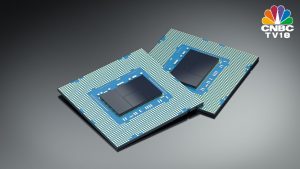






 Listen to the Article
Listen to the Article  Daily Newsletter
Daily Newsletter





